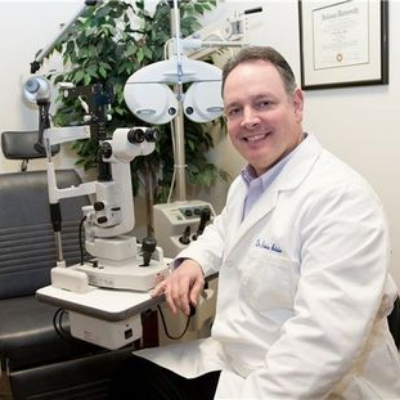Locate a Trusted Optometrist Chino for Family Eye Care Solutions
Wiki Article
Recognizing the Comprehensive Duty of an Optometrist in Modern Eye Care
In the developing landscape of health care, the range of an eye doctor's function has actually significantly broadened, extending well past the confines of traditional vision modification. With improvements in innovation and a boosting focus on preventative treatment, optometrists are integral in diagnosing and taking care of chronic eye conditions, while likewise engaging in early disease discovery. Their competence in innovative analysis strategies such as optical comprehensibility tomography is vital. Yet exactly how do these duties converge with their function in promoting overall eye wellness, and what does this mean for individual results in a collective health care environment?Expanded Extent of Practice
In recent years, the role of eye doctors has evolved considerably, with numerous professionals now welcoming an expanded range of method that extends beyond conventional eye exams. Their obligations currently include a vast variety of solutions, including recommending drugs for ocular problems, handling chronic eye conditions, and executing small medical treatments.
Additionally, optometrists are currently a lot more associated with collective care, working very closely with ophthalmologists, medical care doctors, and various other health care professionals to make sure holistic client care. This interprofessional partnership is essential in handling intricate cases that need a multidisciplinary approach. Additionally, eye doctors are playing a pivotal role in public wellness initiatives, such as vision screenings and eye health education and learning, aimed at improving community health end results.
The broadened extent of technique for eye doctors not only boosts their capacity to provide detailed treatment but also addresses the expanding need for obtainable and effective eye treatment solutions, adding to overall healthcare enhancements.
Early Condition Discovery
Early discovery of eye illness is significantly ending up being a focal point in the broadened function of optometrists. As primary eye care providers, eye doctors are distinctively placed to recognize early indications of ocular conditions such as glaucoma, macular deterioration, diabetic retinopathy, and cataracts. This essential role is critical, as very early diagnosis can dramatically enhance the administration and prognosis of these problems, potentially preventing vision loss and improving patient end results.
Eye doctors employ extensive eye evaluations to discover subtle changes in vision and eye health and wellness. These assessments commonly include evaluations of aesthetic acuity, intraocular stress, and retinal health. The ability to acknowledge very early indications of systemic health problems, such as high blood pressure and diabetes mellitus, with ocular signs even more underscores the relevance of regular eye examinations. Early intervention is not only advantageous in preserving vision however also in minimizing medical care expenses related to sophisticated illness therapies.
Moreover, eye doctors play a vital role in patient education and learning, emphasizing the relevance of routine eye evaluations as component of total health care. By promoting a positive approach to eye treatment, optometrists contribute significantly to public wellness, making sure conditions are captured and handled efficiently before they can proceed.
Advanced Diagnostic Techniques
Advanced analysis methods have changed the practice of optometry, allowing professionals to find and check eye diseases with extraordinary precision. Technologies such as optical comprehensibility tomography (OCT) provide high-resolution, cross-sectional images of the retina, helping with early detection of problems like glaucoma and macular degeneration.Another vital improvement is electronic retinal imaging, which catches detailed sights of the retina using high-definition cameras. This technology is essential in identifying changes in retinal structure in time, therefore assisting in the management of problems like diabetic retinopathy. Visual area screening, improved by computer-aided systems, permits accurate mapping of a client's field of view, necessary in identifying and tracking glaucoma progression.
Corneal topography, an additional remarkable diagnostic device, produces topographic maps of the cornea's surface. This is specifically beneficial in suitable get in touch with lenses and planning refractive surgical treatment. These sophisticated diagnostic strategies collectively enable eye doctors to offer proactive, targeted care, ensuring better person results and enhancing their essential function in eye wellness administration.
Managing Persistent Eye Conditions
Handling chronic eye problems is a foundation of optometric treatment that needs a comprehensive understanding of numerous ocular illness and their lasting ramifications. Optometrists play an essential function in handling, diagnosing, and tracking problems such as glaucoma, diabetic retinopathy, and age-related macular deterioration. These conditions, if left without treatment, can lead to substantial visual disability or loss of sight, highlighting the important significance of continuous treatment and management.Optometrists use a variety of analysis tools, including optical coherence tomography (OCT), aesthetic area screening, and fundus photography, to examine the development of these chronic conditions. By carefully monitoring changes in ocular health and wellness, eye doctors can readjust treatment plans to reduce illness development. This might include suggesting medications, advising way of living alterations, or coordinating with ophthalmologists for surgical interventions when needed.

Role in Preventive Treatment
Precautionary care is an essential facet of optometry that concentrates on preserving eye health and preventing the start of eye diseases. Optometrists play a crucial role in very early detection and avoidance, employing normal eye exams to determine danger variables and refined modifications in ocular health. Optometrist Chino. These examinations are not just regarding vision improvement yet encompass a comprehensive evaluation of eye functions and frameworks, enabling the identification of problems such as glaucoma, cataracts, and macular degeneration at an onsetIn addition to diagnostics, eye doctors educate individuals on lifestyle options that advertise eye health and wellness, such as proper nourishment, UV defense, and the significance of normal eye check-ups. They encourage on the correct use electronic tools to stop digital eye stress, an expanding concern in the digital age. Optometrists additionally provide assistance on safety glasses for recreational and work-related activities, mitigating the risk of injury.
Preventative eye care encompasses systemic wellness problems that show up in the eyes, such as diabetic issues and high blood pressure. By working together with various other healthcare professionals, optometrists contribute to alternative person treatment, stressing the interconnectedness of eye and systemic health. This proactive method is necessary these details in safeguarding visual acuity and general wellness.
Final Thought
Optometrists currently occupy an essential function in contemporary eye care, defined by a broadened range that includes identifying and handling chronic eye conditions, suggesting medications, and carrying out minor surgical procedures (Opticore Optometry). Their expertise in very early disease discovery is improved by innovative diagnostic techniques such as optical comprehensibility tomography and electronic retinal imaging. By emphasizing preventive treatment read what he said and patient education and learning, optometrists add significantly to total eye wellness, working together with other healthcare specialists to make sure reliable and detailed client outcomes
In enhancement to diagnostics, optometrists enlighten clients on way of living choices that advertise eye health, such as appropriate nourishment, UV protection, and the relevance of regular eye examinations.Preventative eye care prolongs to systemic wellness issues that manifest in the eyes, such as diabetes and hypertension.Optometrists now inhabit a critical function in modern-day eye care, defined by an expanded range that includes detecting and managing persistent eye problems, suggesting medications, and doing small medical procedures.
Report this wiki page